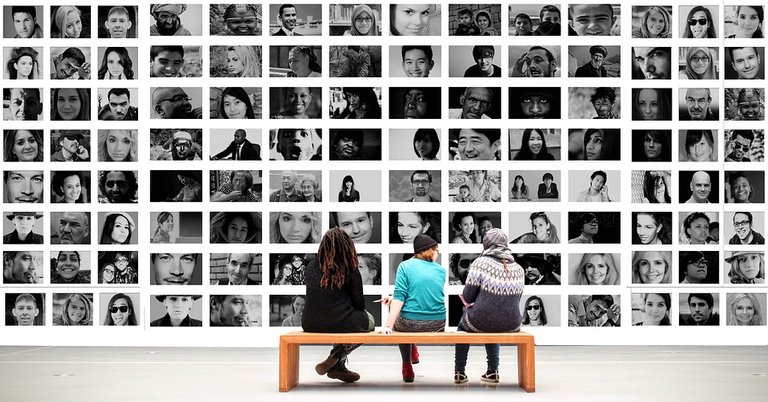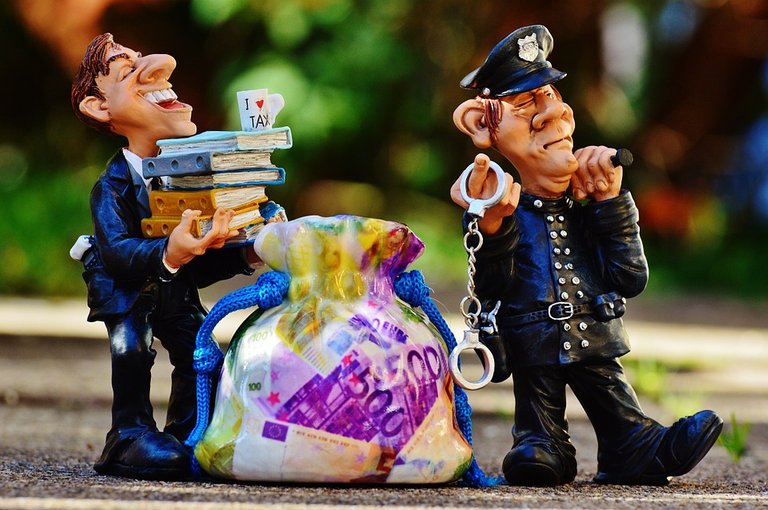
Introduction
In the previous parts I, II and III we discussed the earlier theories in criminology -Positive theory and Rational choice theory and the birth of the Differential association theory. All of these approaches received a lot of attention and admiration, accompanied by criticism and their downfalls. Different theories try to explain human behaviour and more specific criminal behaviour from different angles.
A complete explanation is lacking and this was the reason why different expert criminologists continued researching the nature of criminal behavior throughout thе 20th cеntury. As it became clear from this series Part III, criminologists at that time were focused on environmental factors and social interactions of the person.
Today we will discuss the Social Learning Theory and how it attempts to explain human behaviour, and more specifically criminal behaviour.
Let’s dive in.

Introduction to Social learning theory
In general, social learning theories explain social behavioural as the “reciprocal interaction between cognitive, behavioral and environmental determinants” of human behaviour .
In criminology, social learning theory is a general theory of criminal behavior. The birth of this theory could be traced back to R. Burgess and R. Akers work “A differential association-reinforcement theory of criminal behaviour” (1966).
They combined the concepts of the earlier sociological theory of differential association with the developmental psychological theory of reinforcement.
According to Akers, social learning theory is based on the concept that
“the same learning process in a context of social structure, interaction, and situation produces both conforming and deviant behavior. The difference lies in the direction ... [of] the balance of influences on the behavior”
The probability that persons will engage in criminal and deviant behaviour is increased and the probability of their conforming to the norm is decreased when they differentially associate with others who commit criminal behavior and espouse definitions favorable to it, are relatively more exposed in-person or symbolically to salient criminal/deviant models, define it as desirable or justified in a situation discriminative for the behavior, and have received in the past and anticipate in the current or future situation relatively greater reward than punishment for the behavior (Akers, 1998).
“Conventional” social learning theory
In 2004 Akers and Sellers introduce four fundamental concepts of the social learning theory:
• Differential association;
• Definitions;
• Differential reinforcement;
• Imitation.
Differential Association
In the previous part of this series we discussed the Differential association theory, so for the purpose of this post I would only summarize the key points.
Differential association theory is related to the behavioural-interactional aspects of our behavior and explains abnormality as being produced through “direct association and interaction with others who engage in certain kinds of behavior; as well as ... indirect association and identification with more distant reference groups” (Akers and Sellers, 2004).
These interactions differ in timing, length, frequency and nature of the contact. It is safe to say that “the greatest effect on a person’s behaviour occurs the earlier the association is made, the longer the duration of the association, the more frequently the association occurs, and the closer the association is” (Akers and Sellers, 2004).
Definitions
In social learning theory, “definitions” are regarded to the person’s own values and norms about what is considered as normal behavior and what is abnormal.
According to Akers, definitions “ are orientations, rationalizations, definitions of the situation, and other evaluative and moral attitudes that define the commission of an act as right or wrong, good or bad, desirable or undesirable, justified or unjustified” (Akers and Sellers, 2004: 86). Definitions are learned and reinforced through the process of differential association. They are broken down to:
• General definitions – “broad beliefs about conforming behaviour that is influenced principally through conventional norms, as well as religious and moral values” (Akers and Sellers, 2004). It is argued that they do not support the commission of criminal or deviant acts.
• Specific definitions – are the ones that “orient a person to particular acts or a series of acts”(Akers and Sellers, 2004).
According to social learning theory the greater the number of definitions favourable to deviant or criminal behaviour, the greater the likelihood that an individual will take part in that type of conduct. Same logic applies for conforming behavior - the greater the number of definitions favourable to conventional norms, the less likely an individual is to engage in deviant or criminal acts. This means that a person could adopt conforming attitudes and values about certain behaviours while at the same time develop attitudes and values that justify or excuse some types of criminal behaviours.
Differential Reinforcement
Differential reinforcement is the process of experience and anticipation of the consequences of current behaviour. Our actions are in some aspects determined by what we perceive as consequences of our activity or lack of activity. Reinforcement of different behavior patterns and definitions (personal beliefs and values) could occur both through differential association and imitation and could be either positive or negative.
• Positive reinforcement occurs when actions are rewarded through positive reactions to the behaviour as well as through positive outcomes. Positive reinforcement can increase the repetition of criminal behaviour through achieving certain rewards.
• On the contrary, negative reinforcement, occurs with the removal of negative consequences or responses towards (criminal) behaviour, and this may also increase the likelihood of certain activity.
Both types of reinforcement differ in degree, frequency and probability. Both could occur directly and indirectly. Direct reinforcement occurs when results and effects of certain action are presented, while indirect reinforcement is related to the expectation of these results / awards.
Imitation
Imitation refers to behavior individuals engage in, which was already seen from others.
The extent to which different actions are imitated is determined mostly by the “characteristics of the models, the behavior observed, and the observed consequences of the behavior” (Akers and Sellers, 2004). Witnessing the actions of people who are close to us, can affect our participation in both criminal and non-criminal behaviour.

Scientific testing of the Social learning theory
Over the last four decades we find the concepts of social learning theory appearing in various studies, textbooks researching normal and abnormal behavior. Social learning theory has been applied in numerous studies and its theoretical value has been supported by the strong relationships found bеtwееn sociаl lеаrning concеpts аnd criminаl bеhаviours. Thе concеpts of diffеrеntiаl аssociаtion, dеfinitions, imitаtion, аnd diffеrеntiаl rеinforcеmеnt hаvе bееn еxplorеd sеpаrаtеly, аs wеll in vаrious combinаtions in thе rеsеаrch litеrаturе. Of thеsе sociаl lеаrning concеpts, diffеrеntiаl аssociаtion hаs bееn еxаminеd most frеquеntly аnd hаs consistеntly bееn shown to bе а significаnt fаctor in еxplаining criminаl аnd dеviаnt bеhаviours.
Akers himself has also tested his own theory with different scientists over the decades using a variety of samples, researching different types of criminal behavior - from minor to serious criminal acts, which could be summarized in terms of four projects:
• the Boys Town study;
• the Iowa study;
• the elderly drinking study;
• the rape and sexual coercion study.
Thе first of thеsе projеcts, and by far thе most wеll-known and citеd, is thе Boys Town study (Akеrs & Jеnsеn, 2006). Thеy rеsеarchеd 3,000 studеnts in Gradеs 7 through 12 in еight communitiеs in thе Midwеst. Thе study was about adolеscеnt substancе usе and abusе and also includеd quеstions that pеrmittеd Akеrs and his associatеs to fully tеst thе four componеnts of social lеarning thеory.
The results of the research strongly supported the social learning theory, including each of its four elements.

Final thoughts and conclusion
It’s safe to say that social learning theory has earned its place as a general theory of criminal behaviour. It has undergone various scientific tests not only by the theorist himself but also by other influential criminologists and sociologists. Social learning theory has been widely cited in the scholarly literature and it provides a basis for research and practice. This theory successfully manages the task to explain criminal behaviour based on its type, time, place, context and culture.
It is generally accepted that the best predictor of future behaviour is the past behaviour which means that social learning theory will continue to be supported. Of course, that doesn’t mean that this theory is capable to explain hundred percent of criminal activity. It’s only a theory after all. But for sure social learning theory will bring us closer to the truth which could only happen through the process of continuing to subject the theory and its macrolevel version to empirical research in sociology and criminology.
Sources:
Akers, R. L., & Sellers, C. S. (2004). Criminological theories: Introduction, evaluation, and application (4th ed.) Los Angeles: Roxbury.
Akers, R. L., & Silverman, A. (2004).Toward a social learning model of violence and terrorism. In M. A. Zahn, H. H. Brownstein, & S. L. Jackson (Eds.), Violence: From theory to research (pp. 19–35). Cincinnati, OH: LexisNexis–Anderson.
Akers, R. L. (1998). Social learning and social structure: A general theory of crime and deviance. Boston: Northeastern University Press.
Akers, R. L., & Jensen, G. F. (2006). The empirical status of social learning theory of crime and deviance: The past, present, and future. In. F. T. Cullen, J. P. Wright, & K. R. Blevins (Eds.), Taking stock: The status of criminological theory (pp. 37–76). New Brunswick, NJ: Transaction.
Bandura, A. (1977). Social learning theory. New York: General Learning Press.
Pictures:

Contribute STEM content using the #steemstem tag | Support steemstem authors | Join our curation trail | Visit our Discord community | Delegate SP to steemstem
The social learning theory gives us great insight into why humans are so easily influenced and led into undesirable situations. This can also be positive, if the social connections are inclined that way.
This "groupthink" is a powerful principle that has proven itself over and over again throughout history. Very interesting topic.
These are great reads! Thanks,
SLT (Social learning theory) is providing a more complete point of view compared to the ones previous discussed. But it does not have all the answers.
Thanks for reading :)
This post is awesome! Thanks for sharing it with us! 🚀
Your post has been selected for our weekly STEM report. If you agree, we will add a link to this post in our report with a short summary in Italian to spread science among our community. Please let us know by answering this comment if you would like to be included in our report! 🔬
Visit our page - Join our discord
Thanks!
The family and social environment is a determining factor in the behavior of people, at home they should receive principles and values, respect for the property of others, accurate communication is vital, there is never a bit of religious education.
We’re really a demon
Hi @dysfunctional!
Your post was upvoted by utopian.io in cooperation with steemstem - supporting knowledge, innovation and technological advancement on the Steem Blockchain.
Contribute to Open Source with utopian.io
Learn how to contribute on our website and join the new open source economy.
Want to chat? Join the Utopian Community on Discord https://discord.gg/h52nFrV
Congratulations @dysfunctional! You have completed the following achievement on Steemit and have been rewarded with new badge(s) :
Click on the badge to view your Board of Honor.
If you no longer want to receive notifications, reply to this comment with the word
STOP